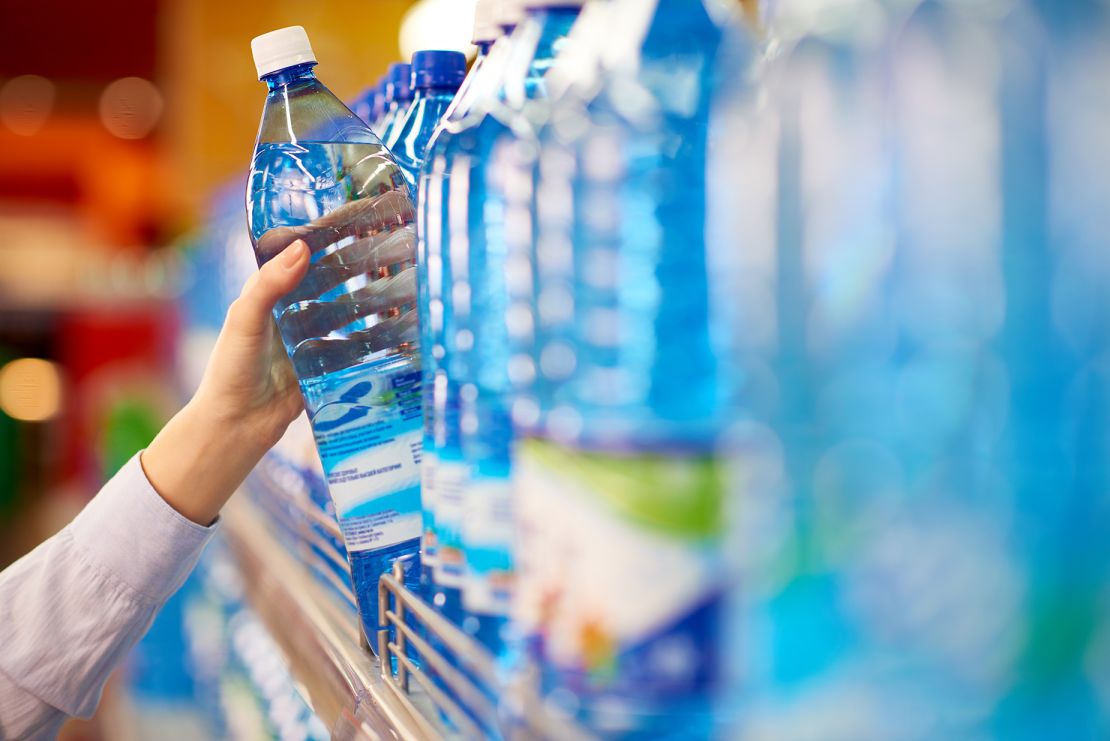Nanoplastics linked to heart attack, stroke and early death, study finds
People with microplastics or nanoplastics in their carotid artery tissues were twice as likely to have a heart attack, stroke or die from any cause over the next three years than people who had none, a new study found.

Carotid arteries, which lie on each side of the neck and carry blood to the brain, can become clogged with fatty cholesterol plaques in a similar fashion as the arteries leading into the heart, a process known as atherosclerosis.
“To date, our study is the first that associated the plastic contamination with human diseases,” said Raffaele Marfella, lead author of the study published Wednesday in the New England Journal of Medicine.
“Our data must be confirmed by other studies and on larger populations,” said Marfella, professor of internal medicine and director of the department of medical and surgical sciences at the University of Campania Luigi Vanvitelli in Naples, Italy, in an email. “However, our study convincingly highlights the presence of plastics and their association with cardiovascular events in a representative population affected by atherosclerosis.”
Pediatrician Dr. Philip Landrigan, professor of biology at Boston College and director of the Program for Global Public Health and the Common Good and the Global Observatory on Planetary Health, said the study provided evidence that tiny plastics may be associated with cardiovascular disease outcomes in humans.
“Although we do not know what other exposures may have contributed to the adverse outcomes among patients in this study, the finding of microplastics and nanoplastics in plaque tissue is itself a breakthrough discovery that raises a series of urgent questions,” Landrigan wrote in an accompanying editorial.
“Should exposure to microplastics and nanoplastics be considered a cardiovascular risk factor? What organs in addition to the heart may be at risk? How can we reduce exposure?” asked Landrigan, who was not involved in the new study.
“What is widely known is that many plastics from bicycle helmets and blood bags to drinking water pipes and wind turbines help protect us, improve healthcare outcomes, and contribute to a more sustainable world,” said Kimberly Wise White, vice president of regulatory and scientific affairs for the American Chemistry Council, an industry association.
“To help reduce new sources of microplastic in our environment, plastic makers have a goal for all US plastic packaging to be reused, recycled, or recovered by 2040. To get there, we’re investing billions of dollars in infrastructure improvements and advocating for effective policies to help collect and recycle more used plastics to keep them from entering our environment in the first place,” Wise White said in an email.
Dangers of tiny plastic particles
Microplastics are polymer fragments that can range from less than 0.2 inch (5 millimeters) down to 1/25,000th of an inch (1 micrometer). Anything smaller is a nanoplastic that must be measured in billionths of a meter.
Nanoplastics are the most worrisome plastics for human health, experts say. At 1,000th the average width of a human hair, the minuscule bits can migrate through the tissues of the digestive tract or lungs into the bloodstream.
From there, nanoplastics can invade individual cells and tissues in major organs, potentially interrupting cellular processes and depositing endocrine-disrupting chemicals such as bisphenols, phthalates, flame retardants, heavy metals and per- and polyfluorinated substances, or PFAS.
In studies of pregnant mice, researchers have found plastic chemicals in the brain, heart, liver, kidney and lungs of the developing fetus 24 hours after the pregnant mother ingested or breathed in plastic particles. Other research has shown that micro- and nanoplastics may cause oxidative stress, tissue damage and inflammation in cells, while animal studies have shown such particles may alter heart rate and impede cardiac function.
Nanoplastics have been found in human blood, lung and liver tissues, urine and feces, mother’s milk, and the placenta. Until now, however, research has yet to determine just what impact those polymers may have on the body’s organs and functions.
“There currently is no scientific consensus on the potential health impacts of nano- and microplastic particles. Therefore, media reports based on assumptions and conjecture do nothing more than unnecessarily scare the public,” said a spokesperson for the International Bottled Water Association, an industry association, in an email.
A recent study found 1 liter of bottled water — the equivalent of two standard-size bottled waters typically purchased by consumers — contained an average of 240,000 plastic particles from seven types of plastics — 90% were nanoplastics.
“It is important to note that bottled water is just one of thousands of food and beverage products packaged in plastic containers,” the spokesperson said. “The largest sources of microplastics in the environment are from erosion and abrasion of synthetic rubber tires, synthetic textiles (e.g., washing clothes made of polyester), and the breakdown of city and household waste.”
A unique study approach
The new study examined tissue removed from the neck arteries of 257 people who underwent carotid endarterectomy.
“It’s kind of a barbaric procedure. Surgeons open up the carotid artery and literally dissect all of the sludge, the plaque, that’s built up in there,” said Dr. Andrew Freeman, director of cardiovascular prevention and wellness at National Jewish Health in Denver. He was not involved in the research.
Having access to such tissue allowed researchers to use an electron microscope to look for minute particles. The examination found “visible, jagged-edged foreign particles” scattered in the plaque and external debris from the surgery, the study said.
Measurable amounts of polyethylene, a common plastic used in plastic wrap, plastic bags, and food and drink containers, were found in the plaque tissues of 150 people in the study.
Some samples also contained chlorine, used to treat swimming pool water and in the production of hundreds of consumer products such as paper, paints, textiles and insecticides. Samples from another 31 patients also had measurable amounts of polyvinyl chloride, also known as PVC or vinyl.
Participants with microplastics and nanoplastics in their bodies were followed for 34 months. In addition to being twice as likely to have a heart attack or stroke or die early from any cause, the plaque tissue showed signs of increased inflammation, said Phoebe Stapleton, associate professor of pharmacology and toxicology at Rutgers University’s Ernest Mario School of Pharmacy in Piscataway, New Jersey. She was not involved in the new study.
“Low-grade inflammation is related to a number of chronic diseases, including cardiovascular disease. Presence of microplastics and nanoplastics, and subsequent inflammation, may act to increase one’s susceptibility to these chronic diseases,” Stapleton said in an email.
However, calling the study results “a direct link to cardiovascular disease is a stretch for the findings,” she added. “I think that with more work, we may find these exposures to be a risk factor … more particles, more inflammation, more risk for poor cardiovascular outcomes.”
Limiting exposure to plastic
Avoiding plastic contamination is “challenging, if not impossible,” yet “each of us, in our small way could start using less plastic and direct our daily choices towards other materials,”
There are additional steps one can take to reduce exposure to phthalates and other chemicals in food and food packaging products, according to the American Academy of Pediatrics’ policy statement on food additives and children’s health.
“One is to reduce our plastic footprint by using stainless steel and glass containers, when possible,” said Dr. Leonardo Trasande, director of environmental pediatrics at NYU Langone Health, in a prior interview with CNN.
“Avoid microwaving food or beverages in plastic, including infant formula and pumped human milk, and don’t put plastic in the dishwasher, because the heat can cause chemicals to leach out,” said Trasande, who is also the lead author for the American Academy of Pediatrics’ policy statement on food additives and children’s health .
“Look at the recycling code on the bottom of products to find the plastic type, and avoid plastics with recycling codes 3, which typically contain phthalates,” he added. Phthalates, known as “everywhere chemicals” because they are so common, are one of the chemicals used in manufacturing known to be hormone disruptors.
Cut down on the use of disposable plastics, suggests the Natural Resources Defense Council, an environmental advocacy group. Other suggestions include bringing reusable bags to the grocery store. Invest in a zippered fabric bag and ask the dry cleaner to return your clothes in that instead of those thin sheets of plastic. Bring a travel mug to the local coffee store for takeout and silverware to the office, cutting back on plastic cups and utensils.
-CNN







